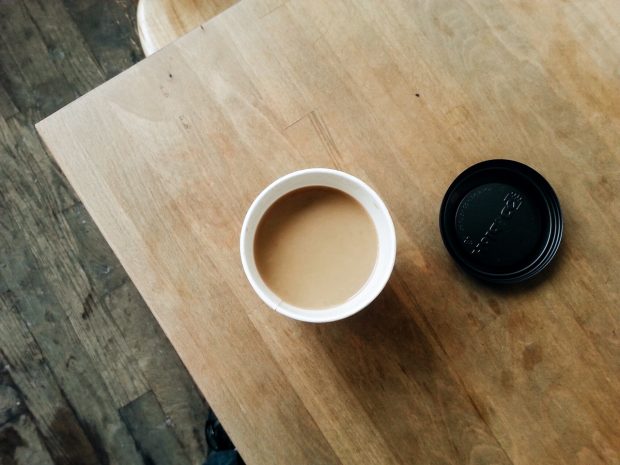We’ve heard time and time again from coffee companies seeking sustainable forms of equity for players throughout their supply chains that a cup of coffee ought to cost more.
New analysis from the genealogy firm MooseRoots, powered by the data research firm Graphiq, seems to firmly back up that assertion, suggesting that when prices are adjusted to inflation, Americans are paying approximately the same amount for a retail cup of coffee now as they were nearly half a century ago, in 1967.
Furthermore, consumers in 2016 are paying significantly less per cup than they have been on average over the past 50 years, with inflation adjusted — a remarkable insight considering the U.S. coffee industry’s insistence on quality-development during that time.
Culling data from payment systems provider Square Inc. and the U.S. Bureau of Labor Statistics’ consumer price index, MooseRoots’ analysis shows that the average cup of coffee today is approximately $2.70, compared to $0.36 in 1967. However, when you adjust the 1967 price to inflation, it comes to $2.63. Over the 50-year average, the inflation-adjusted price of a cup of coffee is $3.15, $0.45 more than consumers are paying this year.
Looking over the 50-year index, MooseRoots notably associates price differences with larger market variables, such as the volatility in the C-market due to occasional weather catastrophes in the world’s largest producing country, Brazil. From the MooseRoots analysis (links theirs):
In 1977, coffee prices reached an all-time high, soaring to an inflation-adjusted price of $6.28 after frost destroyed Brazil’s coffee bean crops. Nine years later, in 1986, Americans saw another spike in prices when demand for coffee surged beyond the available supply. The causes? A volcanic eruption in Colombia and a drought in Brazil, which damaged crops.
In fact, looking at the inflation-adjusted prices in the four-year period from 1977-80, U.S. consumers paid no less than $4.89 per cup on average in any given year.
The group also noted downward spikes caused by the opposite set of conditions, when the world’s coffee supply exceeds demand. Of particular note was the “Coffee Crisis” that peaked in approximately 2002-03, where futures prices for C-level coffees hovered around $0.40 per pound, threatening the livelihoods of coffee producers across the globe and forcing many to abandon their farms.
Looking more closely at the five-year period from 2000 to 2004, the years in which consumers found the most “relief” from the Coffee Crisis, the average inflation-adjusted price for a cup was $2.65, with a high of $2.94 in 2000, and a low of $2.51 in 2004 — numbers not far off the actual price of $2.70 today.
All this is especially remarkable — or troubling, should you consider the ramifications these data have had historically on coffee producers — considering the U.S. growth of “specialty coffee” and “third wave” coffee. It seems that, on the whole, all the trumpet-blowing surrounding quality has sounded little in the way of economic change since 1967.
Nick Brown
Nick Brown is the editor of Daily Coffee News by Roast Magazine.
Comment
2 Comments
Comments are closed.







Too often (and not much has actually changed over the last 15 years) the BENEFITS of “Sustainability” and Quality go UP the supply chain and the COSTS go down the supply chain.
After my first trip to a farm in 2005 I realized more clearly than ever that Coffee is too damn cheap.
I am sure that the farmers would be pleased to read that we are actually paying less now than before. Perhaps another, more telling statistic for those who care about more than the pretty picture in their crema is that back in the glory days referred to in the article, farmers were receiving about one dollar to the retailers three. Now a farmer receives one dollar for the retailers twelve to fifteen. For all of our self-congratulation on sustainability and farmer friendliness, the farmers are overall getting screwed even more now that in the sixties! At least the origin pictures come out nicer on the newer smartphones…